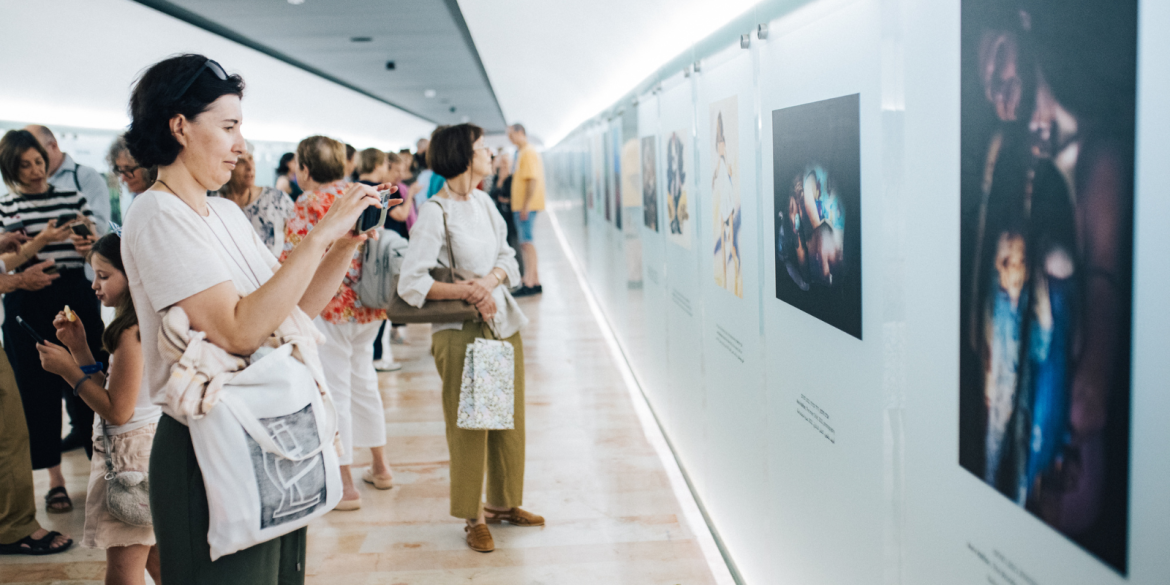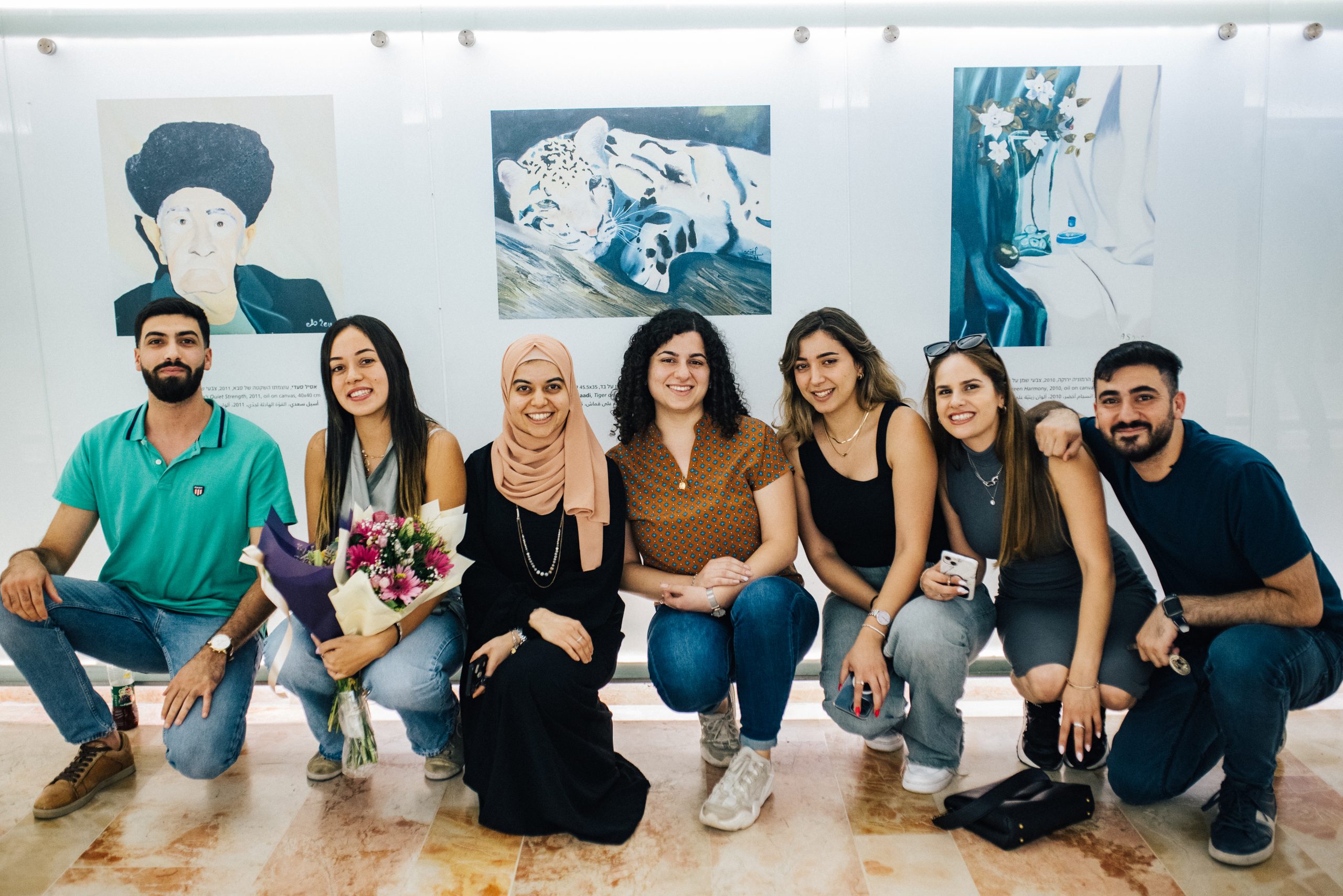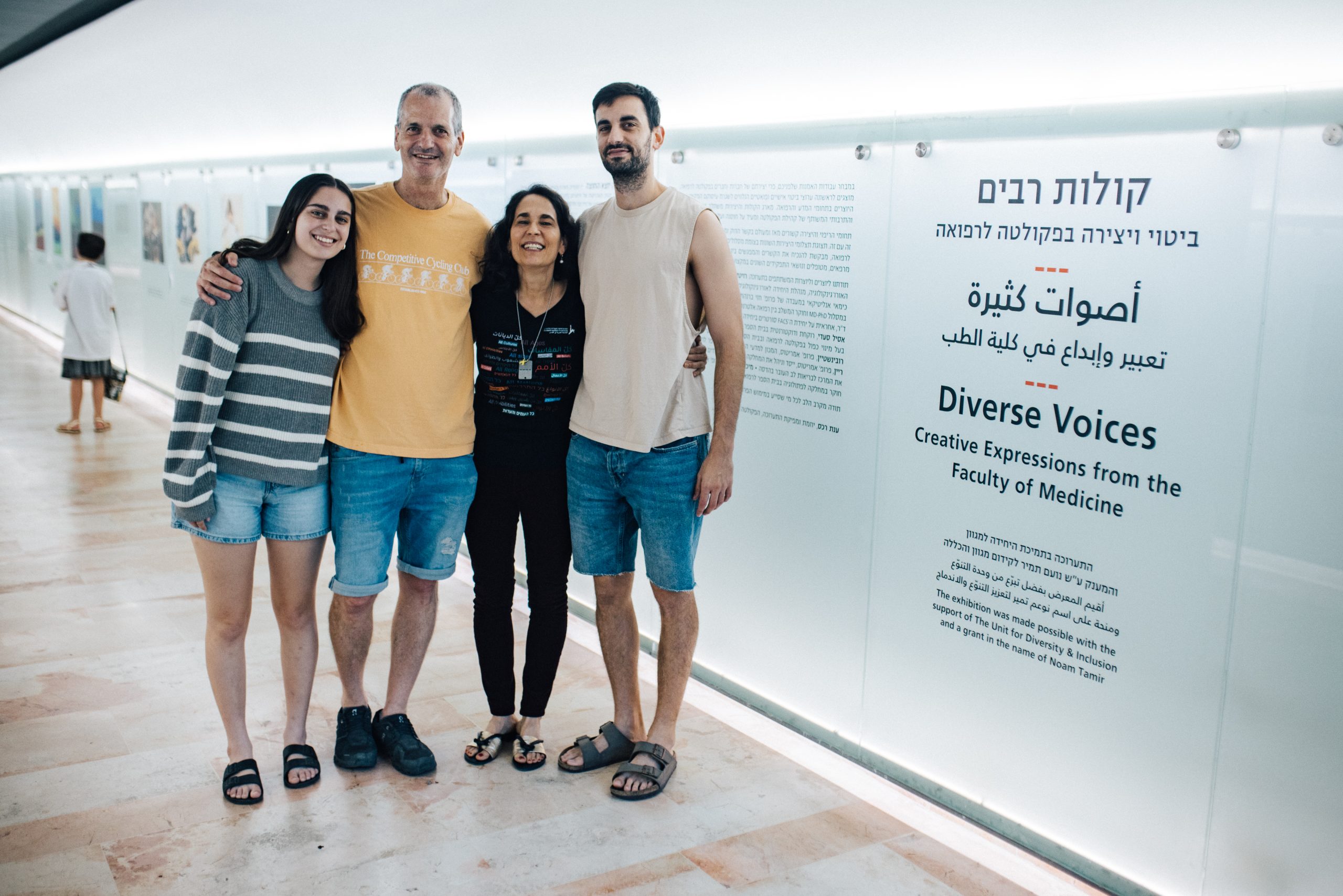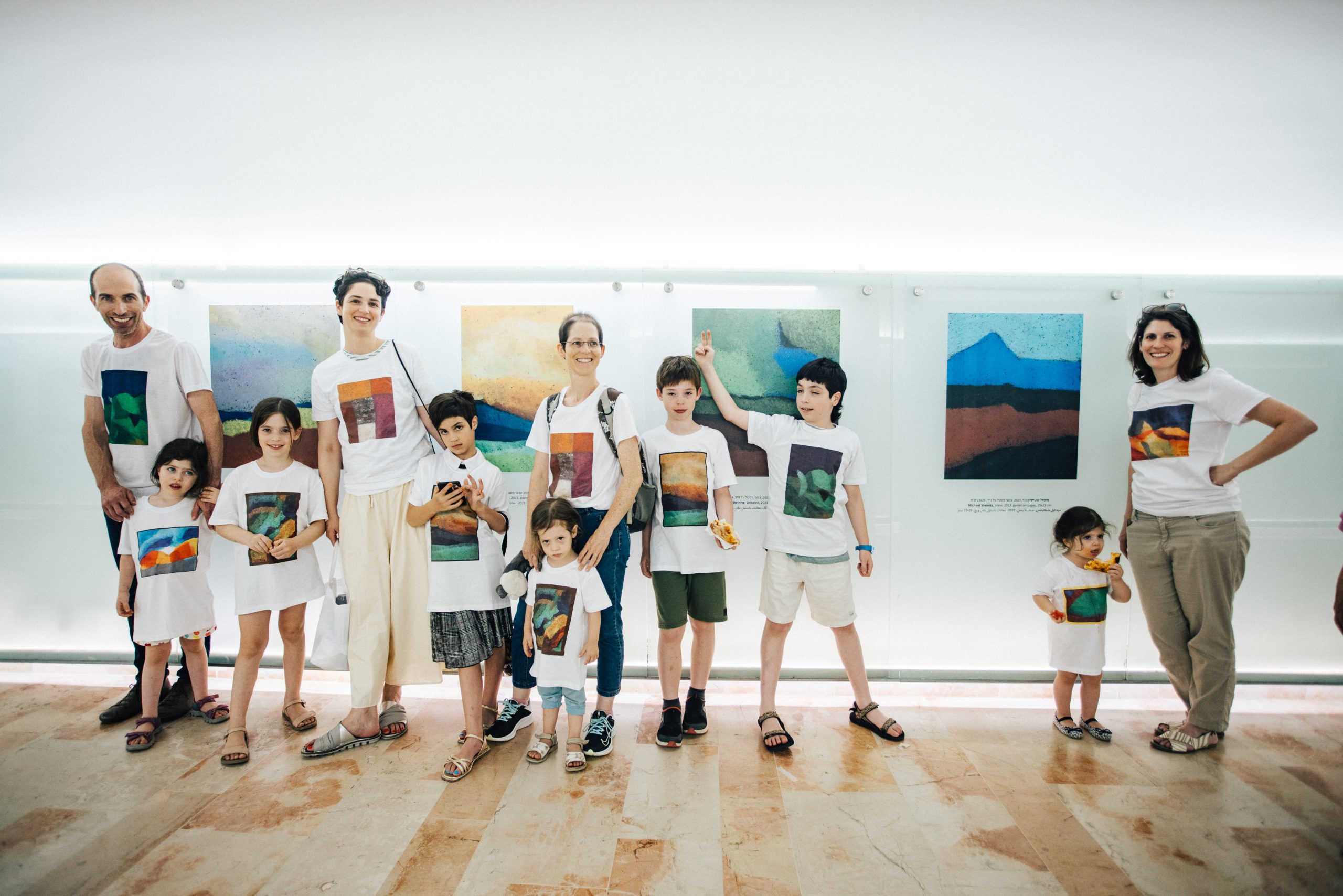
A new art exhibition opened at the Faculty of Medicine on the Ein Kerem campus, which included support from UK Hebrew University Governors, Ruth and Noam Tamir, aims to reflect the diversity of the faculty and create some escapism from the noise and challenges outside.
Similar to London, Hadassah Ein Kerem Hospital has an underground city with a network of tunnels and passageways connecting buildings and departments, often bustling with people rushing to surgeries or treatments. However, one of the lesser-known tunnels is more tranquil; it lies beneath the Hebrew University’s Faculty of Medicine on the Ein Kerem campus, connecting the Magid Auditorium to the Botnar Building. Frequently, you can find a student or lecturer hurrying to a class or lab there.
 In recent months, an art exhibition has been set up on the walls of this tunnel, featuring artworks such as paintings, photographs, prints and even embroideries, created by members of the faculty: students, lecturers, researchers, doctors, staff and emeritus professors. “The tapestry of voices and artistic pieces inhabits the shared human and cultural space of the faculty community, attesting to its resilience and multifaceted nature.” reads the exhibition description. “The realms of healing and creativity have always been closely and fruitfully intertwined and this exhibition seeks to manifest these connections and encounters between physical healing, mental healing, healers, patients and the various roles within the medical professions.”
In recent months, an art exhibition has been set up on the walls of this tunnel, featuring artworks such as paintings, photographs, prints and even embroideries, created by members of the faculty: students, lecturers, researchers, doctors, staff and emeritus professors. “The tapestry of voices and artistic pieces inhabits the shared human and cultural space of the faculty community, attesting to its resilience and multifaceted nature.” reads the exhibition description. “The realms of healing and creativity have always been closely and fruitfully intertwined and this exhibition seeks to manifest these connections and encounters between physical healing, mental healing, healers, patients and the various roles within the medical professions.”
The exhibition was initiated by Anat Reches, the Science and Research Relations Coordinator at the Faculty of Medicine and one of the diversity coordinators, who aimed to create a project that showcases the many aspects reflecting the diverse nature of the faculty and provides a bit of escapism from the external noise and challenges. “Before working at the Faculty of Medicine, I was involved in cultural and educational activities and even participated in organising an exhibition at the Israel Museum in Jerusalem. The other side of the tunnel features a scientific exhibition, but this area was always empty. This bothered me and I came up with the idea to initiate an exhibition focusing on diversity and cultural integration within the faculty.”

To Anat’s delight, the idea was accepted, a committee was formed, a call for submissions was published and out of dozens of submissions, over twenty artworks created by students and researchers, both young and elderly, were selected for the exhibition, reflecting the diversity of the Faculty of Medicine. For four months, a broad team, including key figures and former leaders from cultural institutions in the city, such as the Israel Museum and Bezalel Academy of Arts and Design in Jerusalem, who contributed their time, knowledge and energy, worked on the exhibition. “Their involvement in the project demonstrates the solidarity, cooperation and mutual responsibility characteristic of Jerusalem’s institutions.” The exhibition was curated by the University’s curator, Dr Michal Mor and designed by Batya Segal.
The chosen name for the exhibition, “Many Voices,” reflects the multifaceted nature of the faculty and reveals another layer not visible to the eye. Among the exhibitors are emeritus professors whose artistic sides are not widely known and two of the artworks were made by a doctor specialising in pelvic floor rehabilitation who works with embroidery.
Amid ongoing conflict, the academic year, which started significantly late, ended in mid-July, but not before the exhibition’s opening, which was attended by over 150 guests, including the Dean of the Faculty of Medicine, Professor Eli Pikarsky, the University’s Vice President for Strategy and Diversity, Professor Mona Khoury, the artists, their families and many students and staff members who came to support their colleagues. “I’m excited because it turned out just as I imagined,” Anat said in an interview with BFHU. “Hundreds to thousands of people pass through this tunnel every day, including students, faculty, doctors and researchers. This is an eye-level exhibition; I see people stopping and looking and the fact that these are faculty members whom many visitors know fosters spontaneous conversations between the exhibition visitors and its creators. So far, I’ve received a lot of positive feedback and I’m sure that beyond the pride, it brings a sense of joy to the heart.”

The exhibition, established with the generous support of Noam Tamir, is planned to remain on the tunnel walls at least until the end of next year. Displaying the exhibition over an extended period allows people to pass by, read and observe the artworks at their convenience. “Part of the diversity concept we promote at the University is to give everyone a place and allow them to express themselves, their culture and their identity. The exhibition is a wonderful means of self-expression for the project leader, the participants and, of course, the donors who welcomed the idea and made the exhibition possible,” said Professor Mona Khoury, Vice President for Strategy and Diversity.
Read the exhibition’s brochure for further information including about the artists
Photos by Igor Farberov
